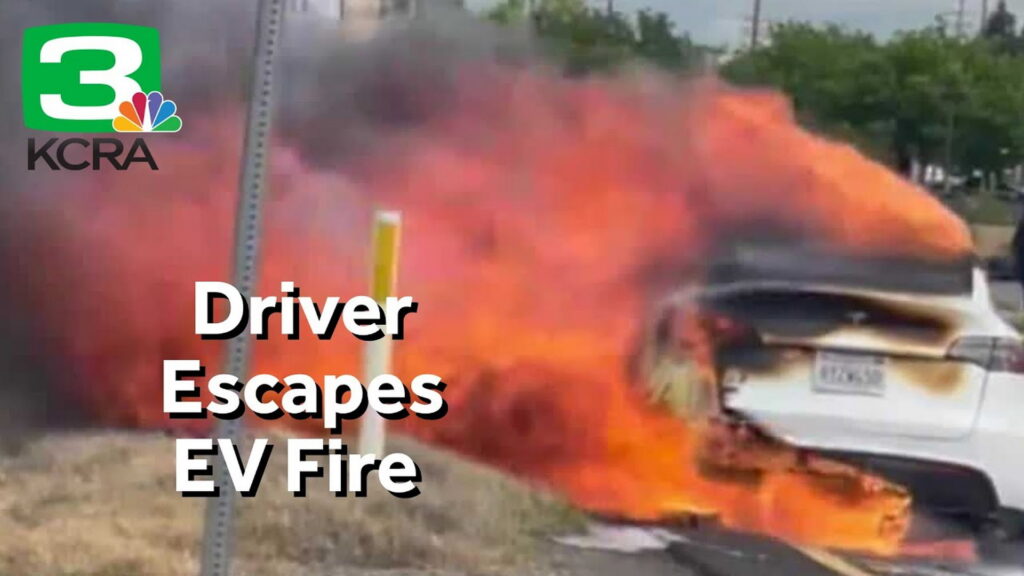–><!—-><!—->
The Tesla driver says that he’s happy nobody was harmed and that he won’t be buying another electric vehicle in the future
1 hour ago
 –>
–> 
by Stephen Rivers
–>
Tesla owner Dishal Malla says he was driving home when his Model Y began to shake. After pulling over and opening the EV’s door to investigate he saw smoke billowing out from under the vehicle. Minutes later his car was a burnt-out shell of what it had been. Now, he’s reflecting on the incident and how it’ll affect his future automotive purchases.
“The moment that I opened the door, I saw smoke coming from the bottom,” he said to KCRA. Having heard of other electric vehicle fires and how dangerous they can be, Malla immediately exited his Tesla and called 911. In the ensuing minutes, he filmed as the car burnt to the ground. Firefighters arrived on the scene but felt ill-equipped to do much other than simply watch.
“The issue with the electric vehicles is access to the batteries,” said Cosumnes Fire Department Battalion Chief Robert Kasparian. “The batteries are what are causing the enormous amount of heat buildup. A lot of times fire departments will just let the vehicle burn until it’s down to the point where they can actually access the batteries and put water or firefighting foam on the batteries themselves.”
More: Tesla Model 3 Bursts Into Flames From Inside While Driving On The Road
It’s worth noting that in similar past situations, scrap yards have submerged electric vehicles in water or put them far away from others to ensure they don’t reignite and cause more damage. In at least one instance, a Tesla caught fire after sitting for three weeks in a scrap yard.
advertisement scroll to continue
For now, Malla is just happy that he escaped. He has two young kids and the situation could’ve been a lot more tragic had either been with him. He also says that he doesn’t plan on buying another electric vehicle after this.
That might end up being the wrong move though. As we told you back in January of 2022, data strongly suggests that EVs are the least likely to experience a vehicle fire. Statistically speaking, hybrids have 3,475 fire incidents per 100,000 vehicles sold. Gas-only vehicles have 1,530 per 100,000 and EVs have an incredibly minuscule 25 over that same sample size.
[embedded content]
 –>
–> 

